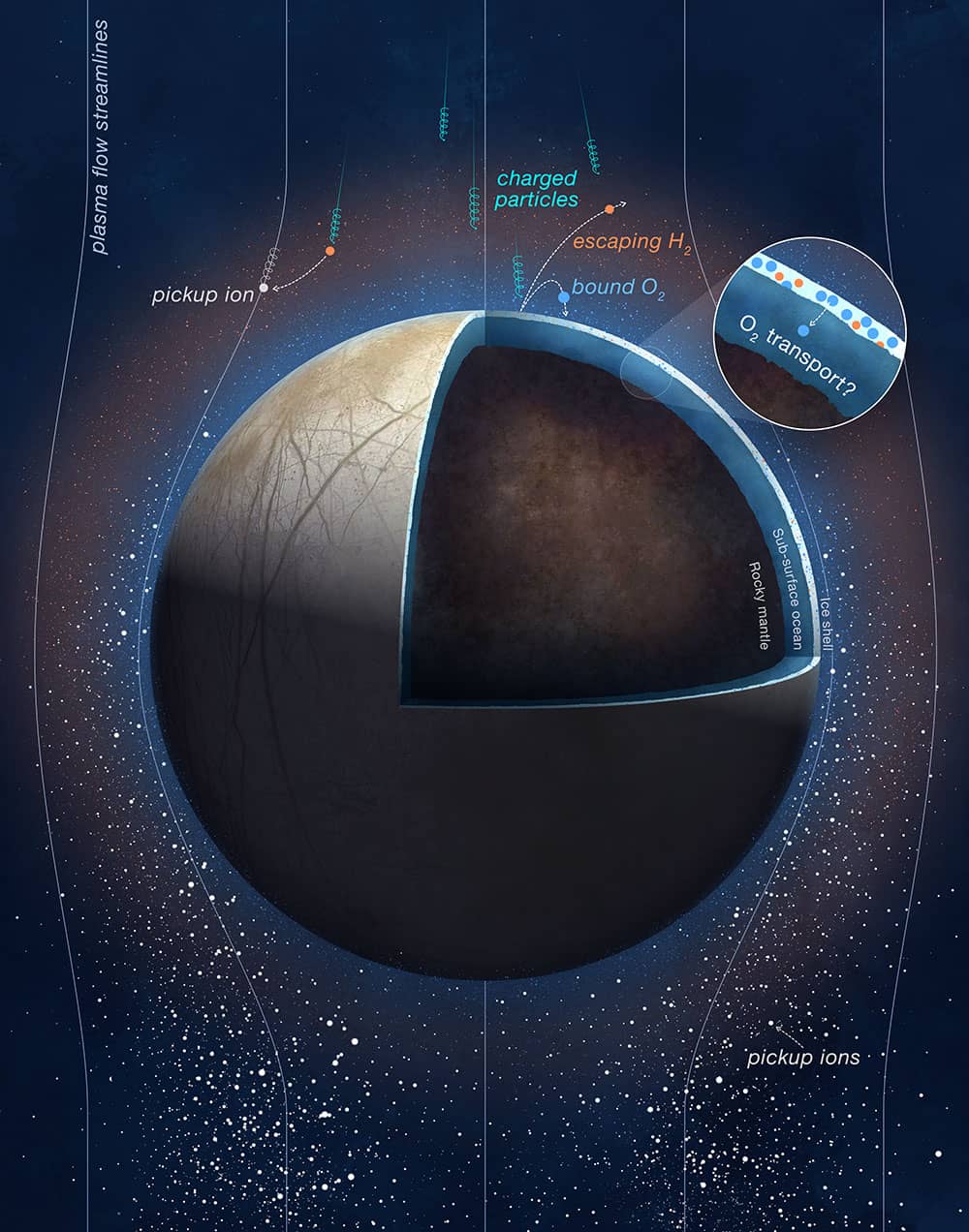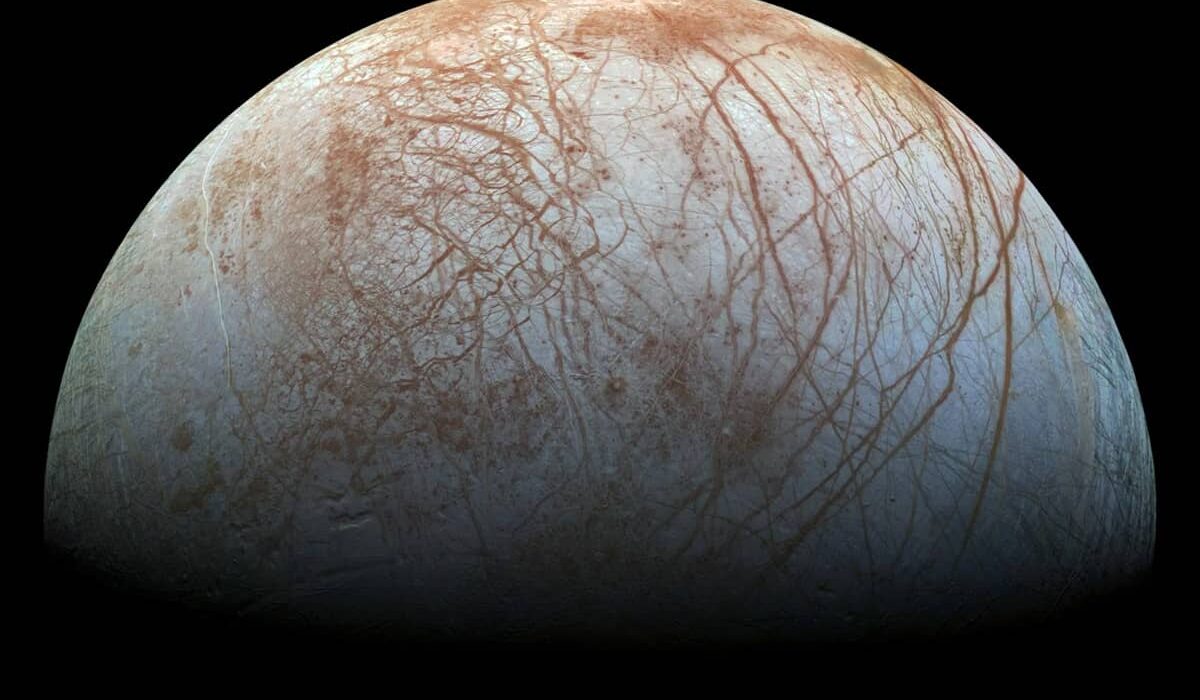Europa, Jupiter’s icy moon, has long captivated scientists with its potential to harbor life beneath its frigid surface. Recent revelations from NASA’s Juno mission have added a new layer of intrigue, as researchers have recalculated the moon’s oxygen production rate. Published in Nature Astronomy, these findings challenge previous estimates.
The scientists behind NASA’s Juno mission have determined that Europa generates approximately 26 pounds of oxygen per second. This revelation, made possible by the spacecraft’s Jovian Auroral Distributions Experiment (JADE) instrument, deviates significantly from previous estimates that ranged from a few pounds to over 2,000 pounds per second. The implications of this recalibration could redefine our understanding of Europa’s habitability.
As Juno soared within 220 miles (354 kilometers) of Europa on September 29, 2022, the JADE instrument identified and measured hydrogen and oxygen ions on the moon’s surface. These ions, created by charged particles bombarding Europa, provide crucial insights into the moon’s complex relationship with Jupiter’s magnetic field. The close encounter allowed scientists to gain a more accurate measure of oxygen production, unveiling a previously unseen level of precision in our understanding of Europa’s composition.

Europa’s unique location within Jupiter’s radiation belts plays a vital role in its oxygen production. Charged particles from the gas giant’s radiation belts interact with the icy surface, breaking down water molecules into hydrogen and oxygen.
“Europa is like an ice ball slowly losing its water in a flowing stream. Except, in this case, the stream is a fluid of ionized particles swept around Jupiter by its extraordinary magnetic field,” said JADE scientist Jamey Szalay from Princeton University in New Jersey. “When these ionized particles impact Europa, they break up the water-ice molecule by molecule on the surface to produce hydrogen and oxygen. In a way, the entire ice shell is being continuously eroded by waves of charged particles washing up upon it.”
Juno, equipped with 11 advanced science instruments, including nine charged-particle and electromagnetic-wave sensors, has provided unprecedented insights into Europa’s composition.
“Our ability to fly close to the Galilean satellites during our extended mission allowed us to start tackling a breadth of science, including some unique opportunities to contribute to the investigation of Europa’s habitability,” said Scott Bolton, Juno’s principal investigator from the Southwest Research Institute in San Antonio. “And we’re not done yet. More moon flybys and the first exploration of Jupiter’s close ring and polar atmosphere are yet to come.”
The pursuit of Europa’s secrets continues with NASA’s Europa Clipper mission, scheduled to arrive at Jupiter in 2030. Armed with a sophisticated payload of nine science instruments, the mission aims to investigate various facets of Europa’s habitability, including oxygen production.





